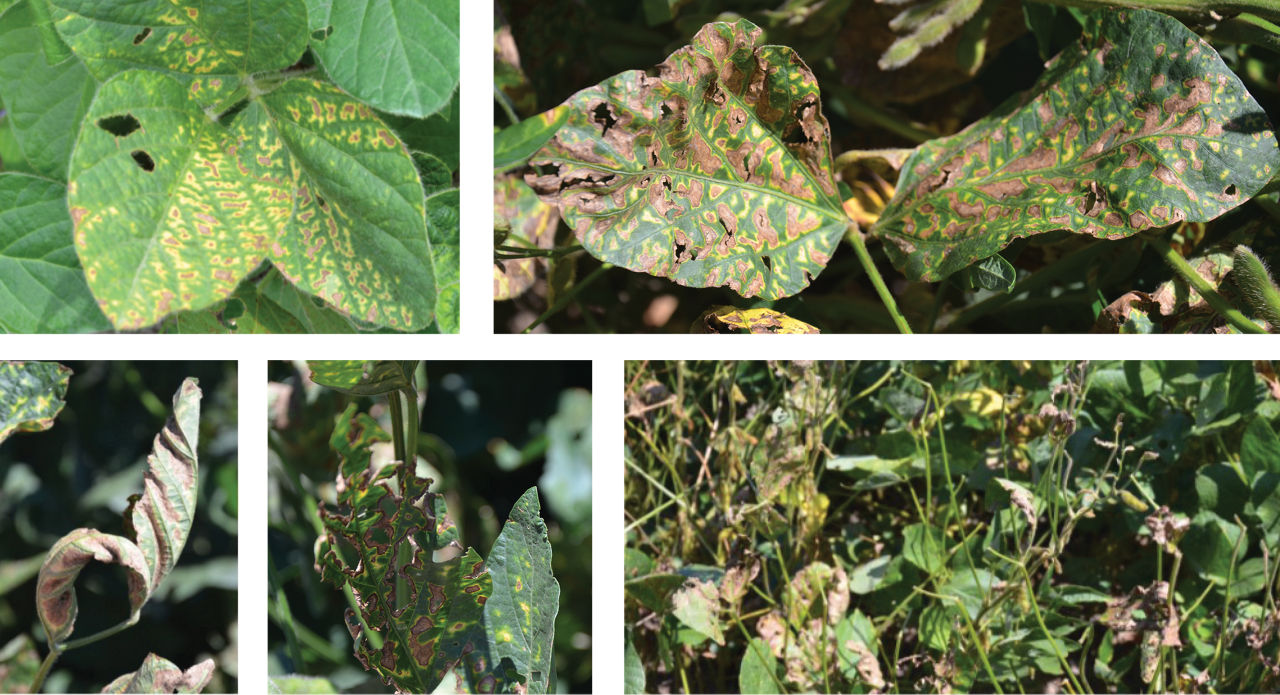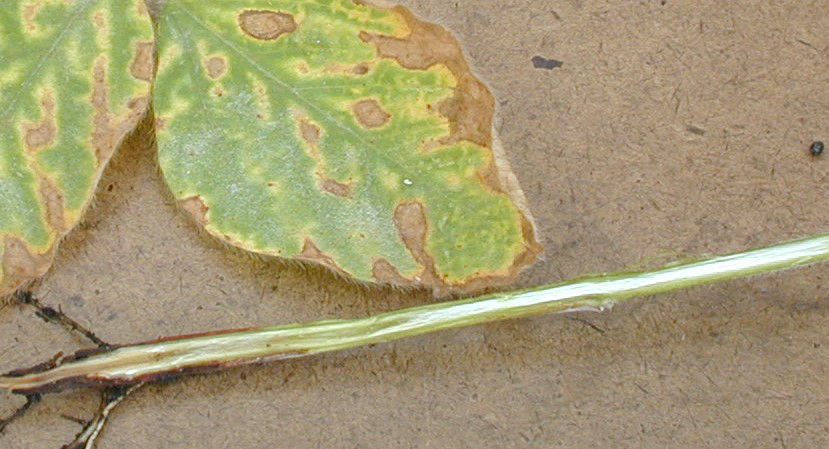5 MIN READ
Soybean Sudden Death Syndrome
August 22, 2021
Soybean sudden death syndrome (SDS) has become a major soybean disease throughout North America.1 The symptoms of the disease, caused by the fungus Fusarium virguliforme, are most identifiable during the late vegetative or early reproductive growth stages; however, initial infection usually occurs shortly after germination.
Disease Identification
The late-season foliar symptoms appear as yellow, chlorotic blotches that form between soybean leaflet veins. The blotches expand into large, irregular, chlorotic patches that become brown and eventually die. Leaflets are likely to drop off the plant leaving the petiole attached to the stem (Figure 1).

Additional identifiable symptoms include a white, healthy-looking stem pith that may have tan to light-brown streaks (Figure 2) and on occasion, the roots may exhibit a bluish-white spore mass (Figure 3). Plants infected with SDS are likely to abort flowers and pods.



Soybean stem canker (northern and southern) and brown stem rot (BSR) cause similar foliar symptoms. Therefore, it is important to properly identify the causal disease. To differentiate, the leaflets infected with the two canker diseases and BSR remain attached to the plant and the pith of BSR-infected plants becomes tan to brown near the crown and stem nodes (Figure 4).

Disease Environment and Cycle
Fusarium virguliforme, a soil-borne pathogen, overwinters in crop residue and soils and can be spread from field to field with equipment. The disease is favored by cool, wet weather soon after planting for initial infection. Compacted soils and the presence of soybean cyst nematodes (SCN) have been associated with SDS development. The disease has also been associated with high-yield production practices.
Management
Managing for SDS should occur prior to planting with practices that can help reduce the potential for infection:
Consideration should be given to improving field drainage through tiles or field leveling.
Soil compaction should be addressed with appropriate deep tillage and management practices that reduce the potential for creating compaction.
Soybean products should be reviewed and selected based on SDS and SCN tolerance and resistance levels.
Earlier maturing products may reduce disease impact.2
Seed should be treated with a fungicidal seed treatment.
Consider planting later in the season when soils may be drier and warmer.
Foliar fungicides have not been effective.
Sources:
1Jardine, D.J. 2020. Sudden death syndrome. Soybean Diseases. Soybean Research & Information Network. https://soybeanresearchinfo.com/.
2Meiring, B., Dorrance, A., and Mills, D. 2011. Sudden death syndrome of soybean. AC-44. Ohioline. The University of Ohio State. https://ohioline.osu.edu/.
Web sites verified 5/11/2020. 6003_S9